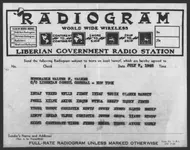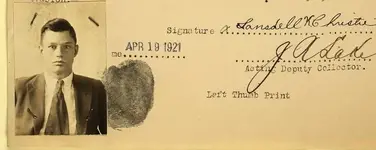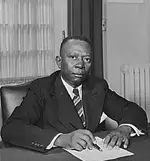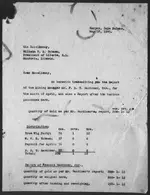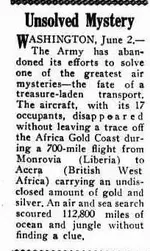Gidday eman1000
Well done! I think you might of hit the name on the head.
The US search for a diversification of its supply of strategic materials brought American steel producers to Liberia where in 1944 William Tubman had taken over from Edwin Barclay.
In 1945 a mining concession for the development of the rich Bomi Hills reserves was concluded with Lansdell K. Christie, a former US Army officer who by sheer coincidence had become familiar with Liberia. Lansdell Christie had served with the US Army in the construction of the airfield near Firestone’s Harbel plantations, Robertsfield, following the US – Liberia Defense Treaty of March 1942.
The Government of Liberia, however, by signing an agreement with Christie, had granted an important mining concession to a person who had no money to realize the investment, as will be shown below.
Lansdell Christie and the Liberia Mining Company
Christie was neither a rich businessman nor an iron ore expert, but he foresaw the possibilities which the high-grade Bomi Hill iron ore offered with respect to the US steel industry. He obtained a 80-year concession giving him exclusive exploration rights in an area of about 3 million acres, within a radius of 40 miles of the Bomi Hills, and the exclusive mining rights in respect of all minerals except gold, diamonds and platinum in a smaller area (of maximum 25,000 acres).
The Liberian Government was to be paid an exploration tax of US $ 100 per month and, after the 3 ½ year exploration period, US $ 250 per month. Further, a surface tax of initially 5 dollar cents per acre and which would gradually climb up to 25 cents, and a basic royalty of 5 cents for each ton of iron ore exported. The concessionaire became exempted from all taxes in lieu of this exploration tax, surface tax and royalty.
As Christie lacked the capital and the expertise to develop the concession he contacted the Dutch Muller Company, who accepted his offer to participate and to engage in the mining project which they had contemplated to realize ten years earlier. However, a substantial Dutch investment was prevented by the Dutch Government’s exchange restrictions, imposed at the end of the Second World War. Yet Muller’s participation in the Liberia Mining Company (LMC), the company Christie in the meantime had created, resulted in the recruitment of mainly Dutchmen for the technical and administrative positions in LMC. In 1948 LMC and Muller signed an agreement making the Dutch company the exclusive sales agent with respect to countries other than the USA and non-exclusive agent for sales in the USA.
Another problem needed to be solved before actual mining operations could begin. The transportation of the ore from the mining site to the Port made a bridge over the St. Paul river necessary. Eventually it was built as part of the Port project, which was financed with US funds (and to be repaid by the Liberian Government). Meanwhile Christie had managed to get one of the major US steel companies involved, the Republic Steel Corporation. The latter bought Muller’s shares in LMC and in the end, Republic Steel was with nearly 60% of the shares the major shareholder of LMC. It also became the non-exclusive sales agent for the sale of iron ore to buyers in the USA.
The major work left was the construction of a railroad from Bomi Hills to the Free Port of Monrovia. Eventually, the railroad was financed by the investors, who spent about US $ 10 million on it. In fact, the railroad represented their only investment in the project (apart from facilities and infrastructure at the mining site).
Clark Babbit must of been a junior partner below. He was 35 in 1945.
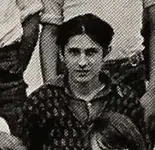
Colonel Lansdell K. Christie got in quick to secure mining concessions even before the World war 2 had finished....and the bullets stopped flying.
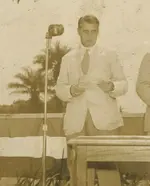
Colonel Lansdell K. Christie lived till 1965. He must of made a mint out of the deal. He even got himself on the cover of Time magazine.
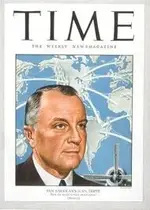
Thank you it explain much that was happening at that place in time. But it was not the iron ore mining concessions it was the gold Mining concessions that was of interest to me. Here in a introduction report on Gold production dating back to prior December 1945.

Its all just part of a search for a missing gold shipment. That is why efforts have been searching through various records.
Crow.
